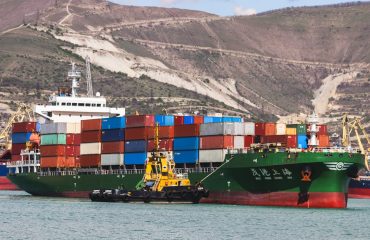Shipping goods internationally can seem daunting, a labyrinth of paperwork, regulations, and logistical nightmares. But with careful planning and the right knowledge, the process can be streamlined and even straightforward. This comprehensive guide will walk you through every step, ensuring your overseas shipment arrives safely and on time.
1. Choosing the Right Shipping Method: Sea, Air, or Land?
The first crucial decision is selecting the appropriate shipping method. Your choice will depend on several factors, including:
- Budget: Sea freight is generally the most economical option, especially for large shipments, but it’s the slowest. Air freight is the fastest but the most expensive. Land freight (trucking) is a viable option for shipments between neighboring countries or for specific routes.
- Time Sensitivity: If your goods need to arrive quickly, air freight is the clear winner. Sea freight is suitable for less time-sensitive goods. Land freight offers a middle ground, depending on the distance.
- Goods Type and Size: Perishable goods or those requiring temperature control are better suited for air freight. Bulky or heavy goods are often more cost-effective via sea freight. Land freight is best for goods that can withstand road travel and are not overly fragile.
- Destination: Accessibility by different transportation modes will vary depending on the destination country’s infrastructure and regulations.
Carefully weigh these factors to determine the most efficient and cost-effective method for your specific needs. Consider obtaining quotes from multiple carriers to compare pricing and service offerings.
2. Understanding Customs Regulations and Documentation: Navigating the Red Tape
International shipping involves navigating a complex web of customs regulations. Each country has its own specific rules and requirements, and failing to comply can lead to delays, fines, or even the seizure of your goods. Key documents you’ll typically need include:
- Commercial Invoice: A detailed description of the goods being shipped, including quantity, value, and weight.
- Packing List: A list of the contents of each package, including details like dimensions and weight.
- Bill of Lading (B/L): A contract between the shipper and the carrier, acting as a receipt for the goods and outlining the terms of shipment.
- Certificate of Origin: A document verifying the country of origin of the goods.
- Other Certificates: Depending on the type of goods, you may need additional certificates, such as health certificates for food products or import permits for restricted items.
Research the specific customs regulations of both the exporting and importing countries well in advance. Consider consulting a customs broker to assist with the complex documentation and ensure compliance.
3. Packaging and Insurance: Protecting Your Investment
Proper packaging is crucial to protect your goods during transit. The packaging should be robust enough to withstand the rigors of international shipping, including potential rough handling and extreme temperatures. Consider using:
- Sturdy boxes: Choose boxes made of strong corrugated cardboard, ensuring they are appropriately sized for the goods.
- Protective padding: Use bubble wrap, foam peanuts, or other cushioning materials to prevent damage during transit.
- Reinforcement: Use strapping or tape to secure the boxes and prevent them from collapsing.
- Clear labeling: Clearly label each package with the recipient’s address, contact information, and a detailed description of the contents.
Furthermore, purchasing cargo insurance is highly recommended. This protects your investment against loss or damage during transit, providing financial compensation in case of unforeseen events.
4. Selecting a Reliable Shipping Carrier: Finding the Right Partner
Choosing the right shipping carrier is paramount. Research different carriers, comparing their services, pricing, and reputation. Consider factors such as:
- Reputation and Reliability: Look for carriers with a proven track record of on-time delivery and excellent customer service.
- Tracking Capabilities: Ensure the carrier offers real-time tracking so you can monitor your shipment’s progress.
- Insurance Options: Check the carrier’s insurance options and coverage limits.
- Customer Support: Look for a carrier that provides responsive and helpful customer support.
- Specialized Services: Some carriers offer specialized services, such as temperature-controlled shipping or handling of hazardous materials.
Obtain quotes from multiple carriers and compare their offerings before making a decision. Read online reviews to gauge their reputation and customer satisfaction.
5. Tracking and Delivery: Monitoring Your Shipment’s Journey
Once your shipment is underway, utilize the carrier’s tracking system to monitor its progress. This allows you to stay informed about its location and anticipated arrival time. Be aware of potential delays and communicate proactively with the carrier and recipient if any issues arise. Confirm the delivery upon arrival and address any damage or discrepancies promptly.
Thorough planning and attention to detail are essential for successful overseas shipping. By following these steps, you can significantly reduce the risks and ensure your goods arrive safely and on time, conquering the globe with your shipments.
Tags: Overseas shipping, international shipping, shipment planning, customs regulations, shipping carriers




